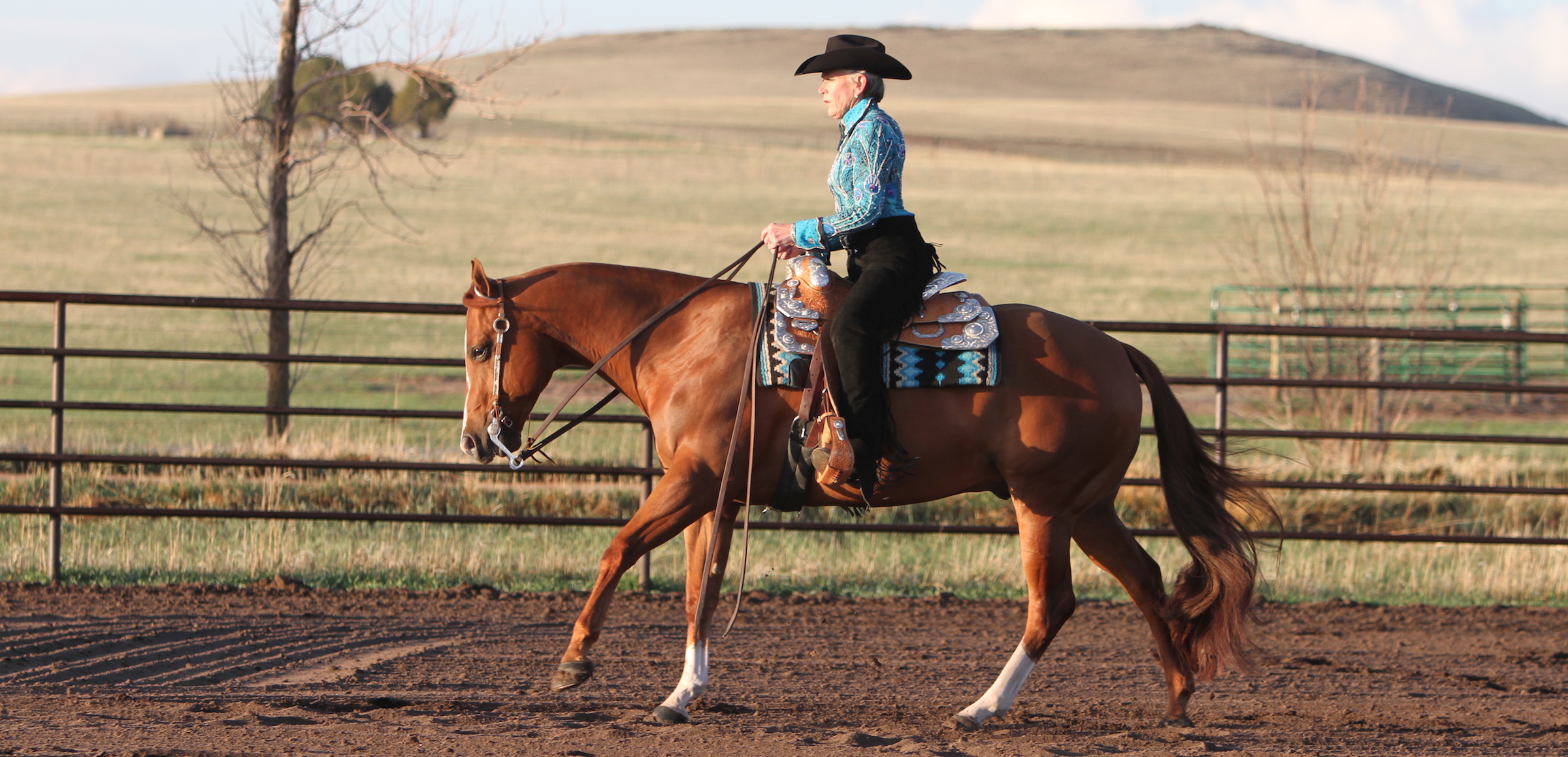I love this definition of equitation: “the art and practice of horsemanship and riding.” As an art, equitation is something we can improve on constantly, regardless of how much natural riding ability we have.

Toward that end, here are six proven ways to improve your horsemanship—that is, your position in the saddle and your effectiveness as a rider. Work these tips into your practice sessions on a regular basis, and you can keep polishing your equitation indefinitely.
Here they are:
1. Kick free. Of your stirrups, I mean. Riding without stirrups improves your balance and promotes an independent seat, plus boosts your strength and stamina in the saddle. Make it a habit to drop your stirrups for a part of your regular pre-ride warm-up before each riding session; do it at the walk, trot, and lope. In addition, here are a few simple exercises you can do while riding without stirrups.
2. Arms up! One at a time, that is. The iconic riding coach Sally Swift taught us that simply stretching one arm straight up, keeping your fingers “growing” toward the sky while the rest of your body sinks downward, will relax your spine and enable you to sit tall and erect, yet deep in the saddle. The essence of a good seat! Here’s a full description plus another great riding tip from Swift.
3. Use dem bones. Be aware always of how your seat bones are affecting and cueing your horse. Great riders accomplish an amazing amount just using their weight and seat; you can come to do the same over time. Start by learning to identify and use the action of your seat bones to direct your horse’s movement.
4. Be ‘shifty.’ Shift gears, that is, from one speed to another, and from one gait to another. Smooth transitions require clear, precise cueing, so practicing them advances your finesse and subtlety as a rider. Aim to be able to lengthen, then shorten your horse’s strides using just your seat bones. Watch for “Effective Transitions” upcoming in the September issue, and review speed changes at the lope using the rhythm of your seat.
5. Lean back ‘n lope. To remove any tendency you may have to lean forward or “curl up” when you ask for a lope, practice thinking “lean back” whenever you cue your horse to strike off. Imagine you’re sitting in your favorite recliner and are about to push it back; this keeps you from getting your shoulders in front of your hips and helps you avoid stiffness and bouncing. Review this and other lope-depart strategies to keep you tall and confident in the saddle.
6. Do the ‘hula.’ Most of us can sit deep through most beats of the lope, but there’s that one part that always seems to bounce us just a little out of the saddle. Neutralize it by practicing the hula. That is, as you sit and breath deeply at the lope, think about working a hula hoop. This puts the “slip” in your lower back and pelvis that’s needed to fully follow your horse’s movements—and keep your bottom in the saddle throughout his stride. For additional details on how, check here.
These six tips will definitely improve your equitation…but only if you use them regularly. To up the odds of that happening, review these “just do it” strategies.
WANT MORE ON RIDING BETTER?
All-purpose ride-better exercise.






